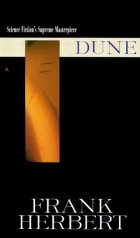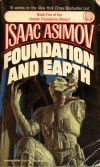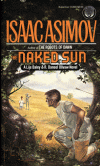It’s been quite a while since I’ve read Dune. I found my way to this interesting conceptualization, Sietch Nevada, through my regular StumbleUpon clicking. For those not familiar with Dune by Frank Herbert, please check it out! It is an excellent novel, as described in my review. I find it interesting how many ideas are drawn from Sci-Fi. Everyday technology like cell phones, video conferencing, and robots (well maybe not everyday yet), were hinted to by authors long before they were developed. I find the Sietch concept intriguing because I lived in Phoenix, AZ for many years. A few years after I left, I started hearing about how Lake Powell, fed by the Colorado River, might dry up soon. I thought that it meant there would be no more water, but experts are referring to “dry” as unable to generate hydroelectric power. So, not only will water levels be low, but there could be power shortages as well!
Sietch Nevada concept straight from Frank Herbert’s Dune
Related Post
A Canticle for Leibowitz by Walter M. MillerA Canticle for Leibowitz by Walter M. Miller
A while back a co-worker of mine gave me A Canticle for Leibowitz by Walter M. Miller. It sat on a shelf for a few years until I recently got around to reading it. I didn’t really know much about the book when it was given to me, but since then I’ve seen it on a few “Best of SF” book lists. It also won the Hugo Award for best science fiction novel. There are three parts to the book, each taking place a few hundred years apart.
The setting of the first part takes begins in the 26th century. At some unspecified time in the past, the world all but destroyed in a global nuclear war. Almost all the secrets of modern technology were lost in what would later be described as a purge. The mob of humans left alive banded together to destroy all knowledge that could lead to another nuclear war. There were book burnings and hangings of scientists. The story follows group of monks that have built an abbey in the desert to house the Memorabilia as they refer to books, technical manuals, and other bits of information that are uncovered over time. Their patron is a man by the name of Leibowitz, who was hung during the purge just after the first nuclear war. (more…)
Foundation and Earth by Isaac AsimovFoundation and Earth by Isaac Asimov
Background:
This is the final novel in the Foundation Universe chronologically speaking. There are a couple short stories completed by other authors, but Foundation and Earth describes (in 494 pages) where Asimov saw his epic saga moving toward. It is a shame that he couldn’t have lived longer to continue on writing. For those that don’t know, Isaac Asimov contracted HIV from a blood transfusion during a heart operation in 1983. It later developed into AIDS, causing heart and kidney failure which led to his death in 1992. For more information on his life and death, visit Asimov Online. I wish I could remember the source, but I know I read that Asimov was not sure exactly how he would continue the series when a fan suggested he go back and write some prequels. Before his death he did fill in some gaps with the Prelude to Foundation and Forward the Foundation.
Review:
Almost no time has passed since Golan Trevize made his decision in favor of Galaxia over a Second Galactic Empire controlled by either the First or Second Foundation. Trevize is still on Gaia along with Janov Pelorat and Bliss. Golan intends to find Earth so that he can find out why he chose felt that Galaxia was best for not only mankind, but for every living thing in the Galaxy. He will not rest until he finds Earth. Bliss insists on going on his search to act as protection through her role as part of Gaia, and Janov has his own research on Earth that he wishes to complete.
The one thing that Asimov succeeds accomplishing in this novel, as he does with the others books in this series, is creating and describing different cultures. These cultures vary from the extremes of conservatism to tribal utopias. Each new world has its own customs, mythology, and history which is described through the interactions between the protagonists and the natives encountered throughout their complex journey. (more…)
The Naked Sun by Isaac AsimovThe Naked Sun by Isaac Asimov
This is the second book in the Robot Novel series by Asimov. A year has passed since The Caves of Steel. Lije Baley is summoned once again to solve a murder. The Department of Justice received a request from the Spacers asking specifically for Baley’s help with the case. This time the murder is not on Earth, but on the 50th Spacer world, Solaria. (more…)



